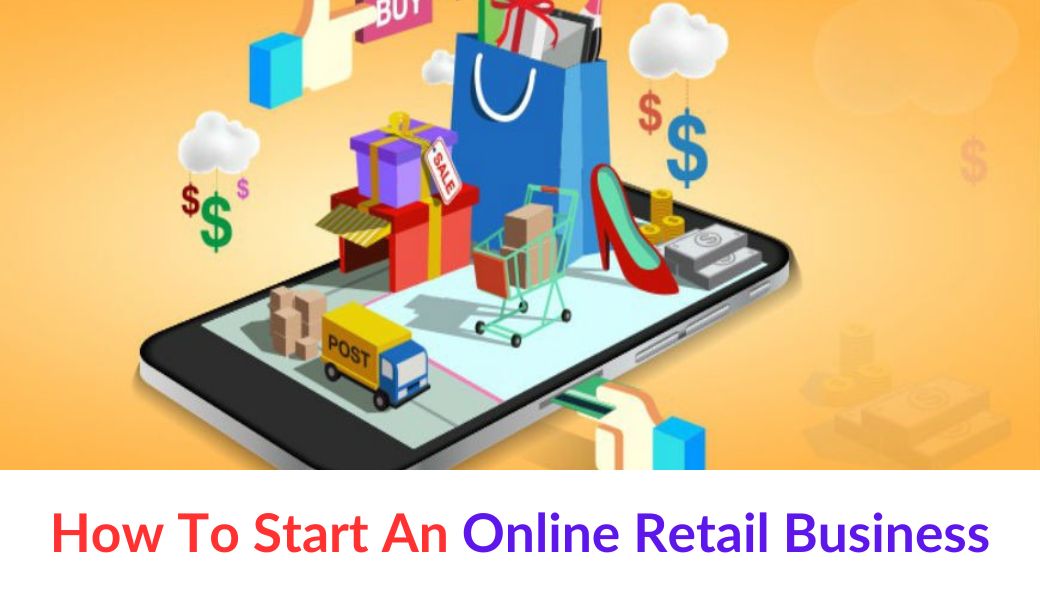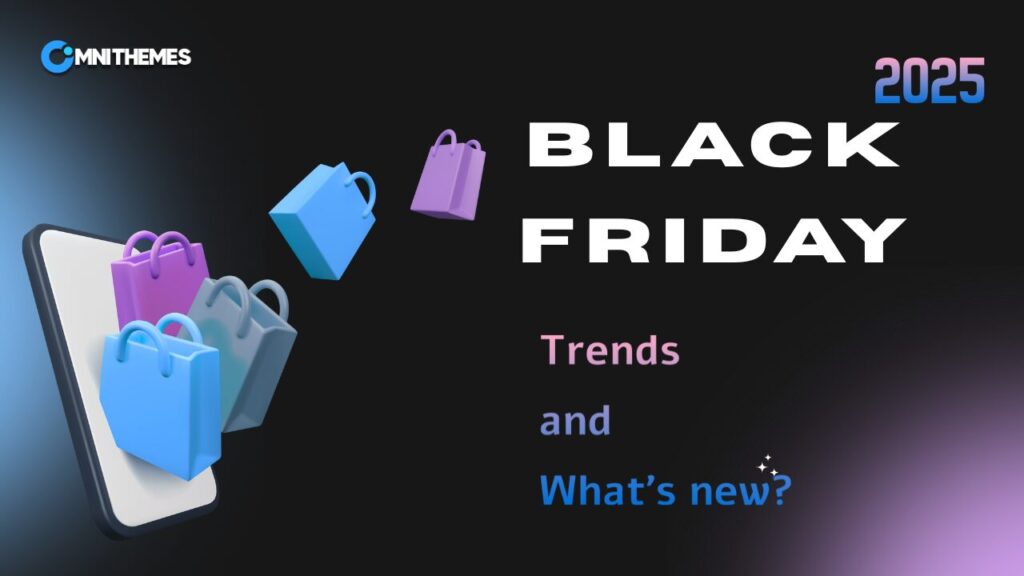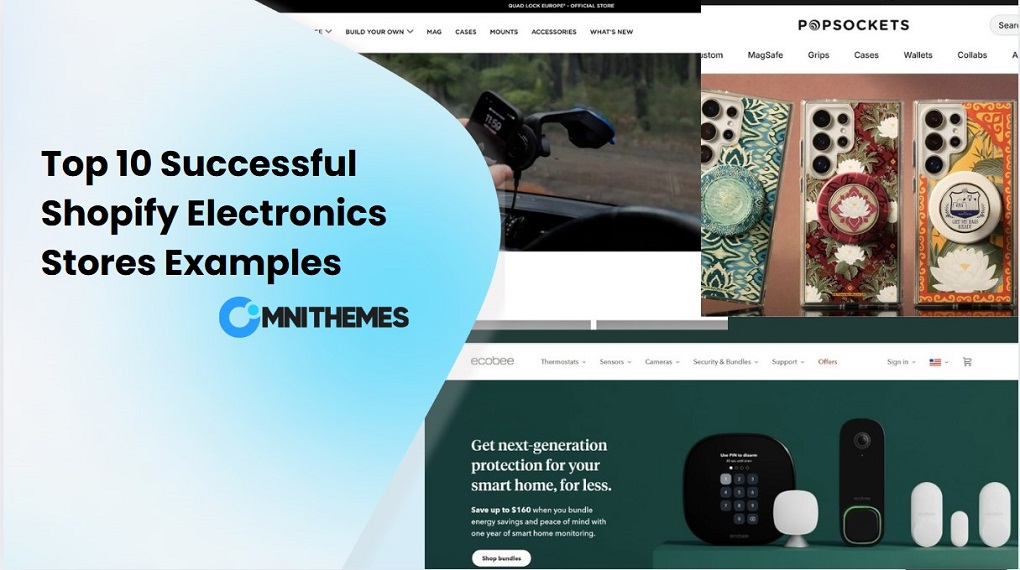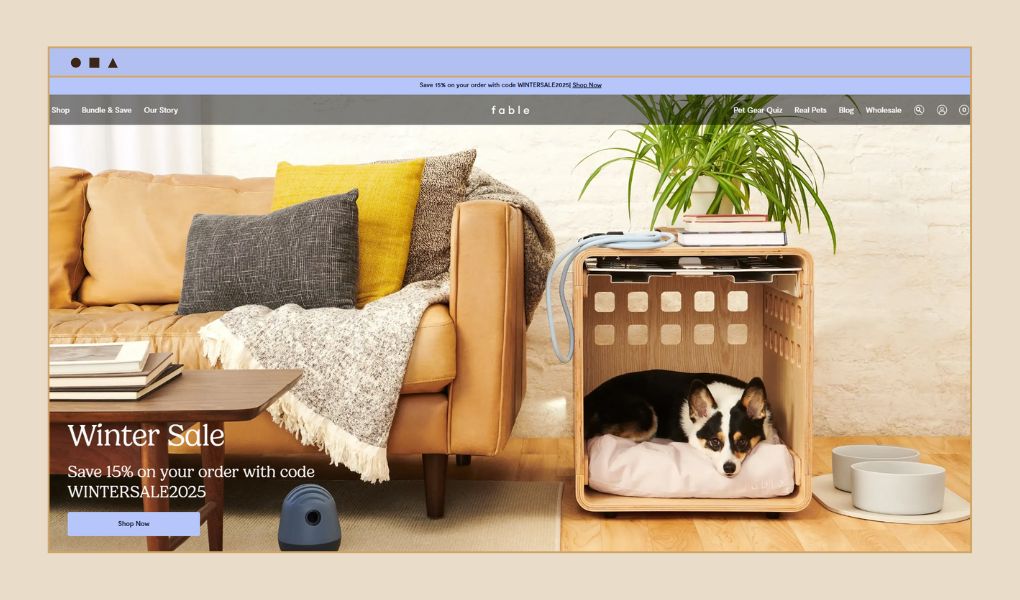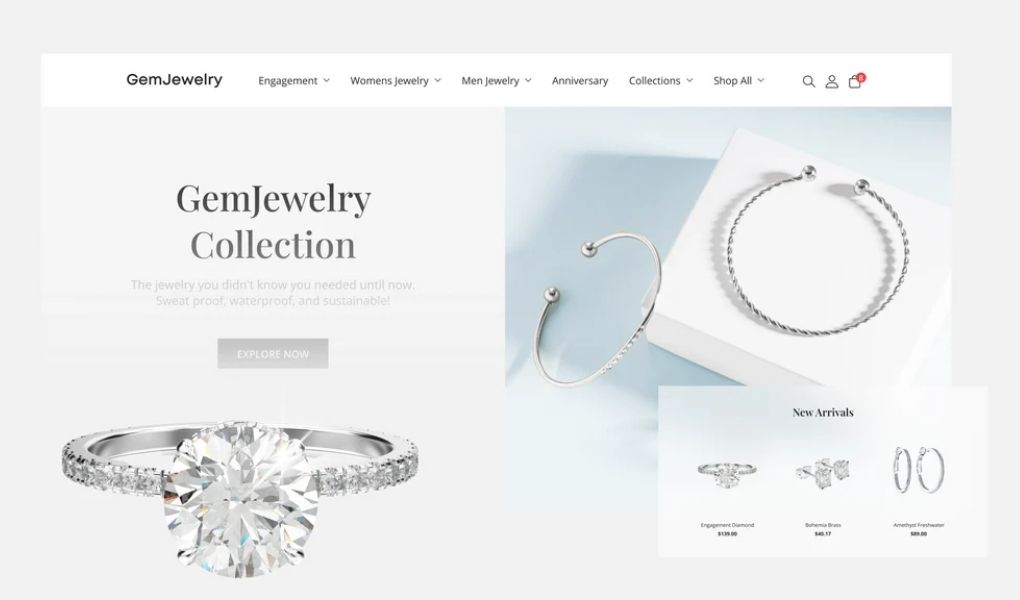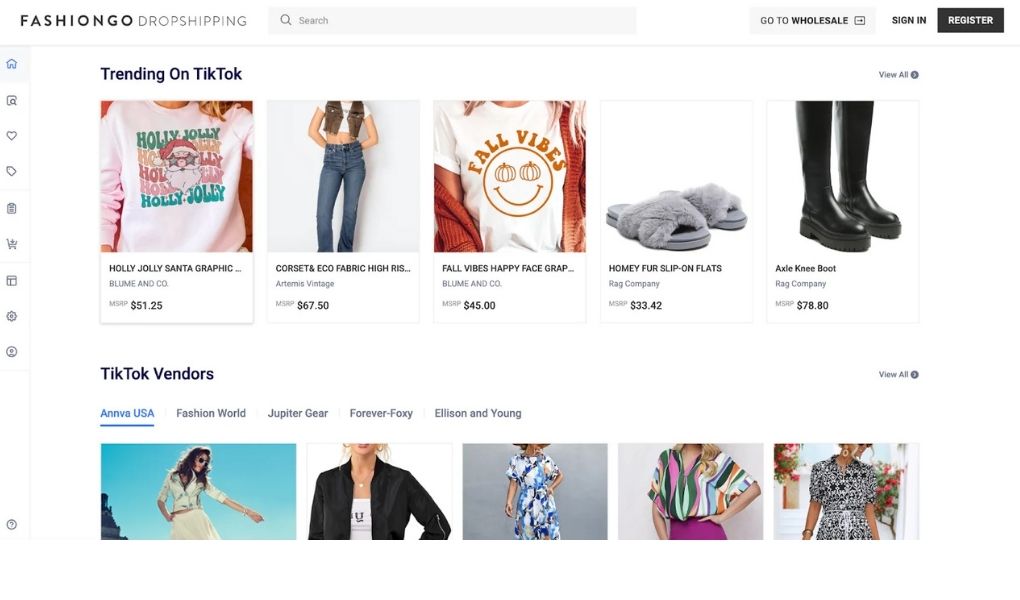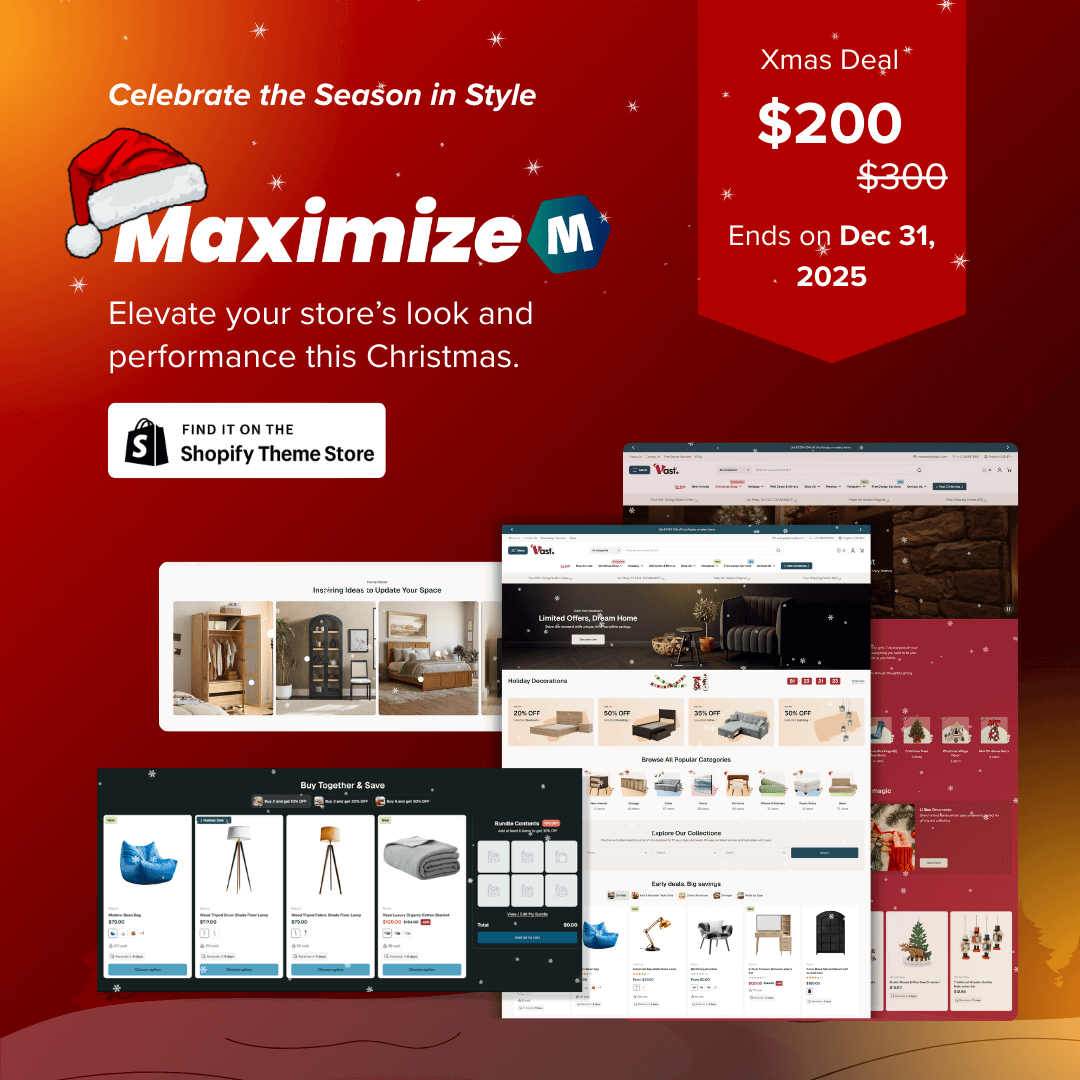It is never an easy task to open an online retail store from scratch, especially when you do not know how and what to prepare at the beginning. Some people give up when they meet some failure in the preparation steps or when the businesses receive too much loss.
In this post, we’ll walk you through every step of starting an online retail business, from picking an e-commerce platform to creating your website and releasing your first item. Building a profitable online business will be easy for you with this thorough guide’s assistance.
How to start an online retail business
Here is a detailed guide on how to start an online retail business from scratch:
1. Find a niche and determine the target audience
Find a suitable niche
The initial phase in creating an online retail shop is deciding which specialized market you want to service. It might be tough to decide which niche to start a retail internet business in, but there are a few tips to help you.
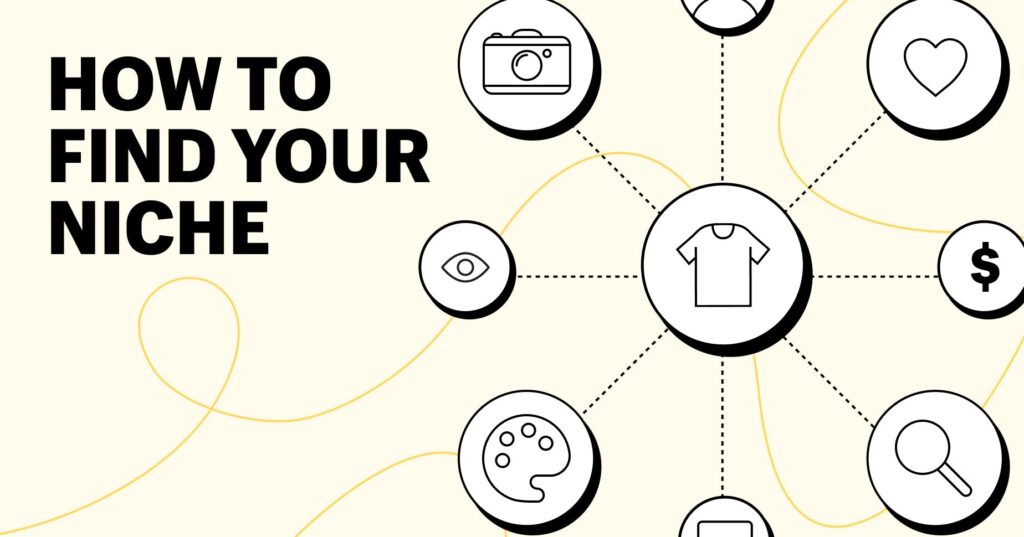
You may look at the industry you’re interested in and discover which sectors are expanding the quickest. This can help you identify which niches are now in demand and likely to be successful in the future.
Another option is to research current firms in your preferred niche. This allows you to learn from their triumphs and errors, as well as determine what elements your firm should have in order to flourish.
At last, you may utilize market research tools such as Google Trends or Yahoo! Search Engines to determine how popular your selected field is currently and where it is heading. This can help you decide whether it is a suitable time to start a business in that industry.
Determine the main target audience
Your target audience is equally vital as your specialization/niche choice. You want to ensure that the things you sell will be of interest to them and that they will be able to acquire them easily. Don’t take feedback on your product from people unrelated to your intended audience.
You may create an audience of any size or characteristic based on the items you want to sell. If you are a new ecommerce business, there are three major key points to consider when selecting your target audience:
- Location field: Geographically divided market segments allow you to better service a certain area.
- Demographics area: You should include elements like age, gender, occupation, education, and salary/ income.
- Interest field: Built on psychographics, which contains your audience’s attitudes, personality, opinions, and lifestyle.
2. Choose the primary products & potential suppliers
Choose the Products
After you’ve defined your niche and target audience, it’s time to choose your product or service offering. This might be the most difficult component of running an internet shop.
One of the most difficult tasks for businesses is choosing viable things to market. Coming up with product ideas is difficult, but if you have a target market in mind, you’re one step ahead. Fortunately, there are several ways to locate things to sell.
Furthermore, you want to ensure that you are not providing a product that is too expensive to manufacture or that no one is looking for. It’s also critical to ensure that you have enough resources, such as storage and delivery, to support your items.
When selecting a product line, you must be passionate about it. This will simplify your decision-making process and allow you to study possible providers more efficiently.
Choose the Suppliers
Once you have a solid understanding of what you’re looking for, it’s time to start researching possible supplier sources. This may be accomplished by reading internet evaluations or speaking with acquaintances in the same industry as you.

If you’ve narrowed down your options, call them and ask questions about their products and operations. Make sure to get samples so you can try them out firsthand.
When you’ve chosen a provider, sign a contract and ensure that all necessary documentation is in place. This ensures that both you and the provider are satisfied with the deal.
3. Form up your brand
Before you start developing an e-commerce website, you need to think about branding. Create a brand identity and assets for use in your online store and other platforms. Make sure you have created the following pieces to incorporate into your store design.
This stage may come naturally to some people, while it may be difficult for others. There are certain things to consider when you establish your own brand. Let’s discuss them all below:
Business name
Select a business name that accurately reflects your brand, whether it’s your own name, a made-up phrase, or a direct representation of what you offer. If you’re stumped, use Shopify’s free domain name generator and a service like Namechk to discover if your company name ideas are accessible on social media and as a domain.
Vision & mission
Before creating brand assets such as a logo or color palette, consider what your brand represents, your mission, your unique selling proposition, and your brand promise to customers. These selections will influence the visual appearance and feel of your brand.
Logo
Whether you engage with a designer or create your own logo, it is an asset that will represent your brand on a variety of platforms, including your online shop and packaging. Be specific about what you want your company to represent, such as your goal, values, and tone, since this will assist a designer in capturing your style.
Images
Clean, beautiful product images allow you to put your best foot forward. If you’re on a tight budget, you may take your own product shots using your smartphone camera and use free stock images until you can afford to shoot your own unique lifestyle images of your products.
4. Register the business
How to start an online retail business? You’ve completed all of the critical steps in opening an online store: selecting a name, designing your website, discovering items, and writing product descriptions. However, before you start your new business, you need to ensure that it is legal.

While it is not the most pleasurable process, incorporating your company is a necessary step. A government-recognized legal body safeguards your personal assets in the event something goes wrong.
Here are some of the main business structures that you might choose when registering your business:
- Sole proprietorship: An unincorporated business having no legal distinction between the corporation and the person running it. It qualifies as a non-employer business and is the easiest to establish and maintain.
- Partnership: A single firm that has two or more owners. Each owner contributes to the firm through finance, property, work, or expertise. Partners share responsibilities and earnings.
- Limited Liability Corporation (LLC): A hybrid business form that combines the benefits of partnerships with the liability protection provided by corporations.
5. Select an appropriate eCommerce platform
The next step is to pick an e-commerce platform that you would like to run your business on. This is the platform where you’ll create and manage your online store. There are several excellent e-commerce platforms to select from in 2024, including Shopify, Squarespace, and Wix.
However, each platform has its own distinct collection of features that influence pricing, capabilities, features, etc., so it’s worth spending the time to identify the best one for you. It is worthwhile to research all of the platforms first to determine which platform is ideal for you, as each offers distinct features and benefits.
Here are a few important factors to consider while selecting an eCommerce platform:
- Ease of use: Ensure that the platform you select is simple to use and navigate. You don’t want to spend hours setting up your business just to have customers struggle to find what they want.
- Marketing tools: When choosing the marketing tools, you should make sure that the platform has all of the marketing tools you require, such as ad campaigns, email marketing, and social media management.
- Store design: The platform needs to enable you to develop a visually appealing and user-friendly storefront. You want customers to feel as if they are buying in a store rather than online.
- Payment processing: Ensure that the platform has dependable payment processing capabilities so that you may receive payments from your consumers.
6. Build your own eCommerce store
Once you’ve picked which e-commerce platform you want to work with, now it is time to register an account and start constructing your online business on that platform. There are several ways to create an eCommerce website, but the most common is to hire an agency or use a self-hosted option.
Partnering with an eCommerce agency is often the easiest option because they will handle all the work for you. However, this option can cost you a lot of money since those agencies are likely to charge a high fee for their services.
Meanwhile, self-hosted solutions completely control your website’s design, layout, functionality, and performance. They are also less expensive than agencies however, this is not always true. Self-hosted solutions might also be more complex to set up and operate, so select one that is simple for you to use.
Setting up an eCommerce store
Once you have chosen the method to build your store, don’t forget to pay attention to the basic elements to form a complete store. Here are some of the crucial elements that you need to note down in order to set up your eCommerce store:
- Navigate to your preferred e-commerce platform, such as Shopify, and establish an account.
- Choose a domain name (usually included with the plan; if not, purchase individually).
- Choose a template or theme.
- Include your business name and logo.
- Customize your homepage and all other web pages.
- Add your items and generate product listings.
- Set up a payment processor.
- Configure options like tax and shipping calculations.
Remember to launch your online store once you finish the setup process
7. Optimize your online store
After your online store is launched, you should make sure it is search engine optimized so that it can be visible online and indexed by search engines like Google. This will improve the visibility of your website, attract more visitors, and increase sales in an organic way.

Below are the additional advice to help you optimize your online store effectively:
Make sure your website is accessible and fast
A responsive and fast-loading website will be helpful to your customers if they want to buy anything quickly. You may speed up page loads by employing compression methods, compressing images, and eliminating pointless information.
Make a sales page that is appealing
Your sales page should have an eye-catching design that can attract visitors. Additionally, you may utilize high-quality graphics or videos to highlight important aspects, which will help prospective clients better grasp what you offer in your online store.
Select the appropriate hosting and domain name
Ensure your target demographic and company concept is reflected in your chosen domain name and hosting. If they know its purpose, people will be more inclined to visit your website and buy some products/ services.
Make necessary changes to the current functionality
It might be time to make some adjustments if your website isn’t operating as well as you had planned. Start by looking for outdated information and broken links. To enhance the user experience, you may also, if needed, add fresh films or audio files or swap out outdated images for better-quality ones.
8. Market your online store
You need to promote your online business as soon as it is operational. This is because using SEO to establish a business is an essential part of your long-term plan. Promoting your products and services will effectively help increase the site’s traffic and gain organic traffic gradually.
Here are a few crucial marketing strategies for advertising your online eCommerce store:
- Social media advertising: It entails publishing relevant advertisements on social media sites such as Facebook, Twitter, and Instagram. It is critical to correctly target your audience since improper adverts can harm your brand and result in missed sales.
- Email marketing: This is an excellent approach to engage with potential clients who may not visit your website directly. You may send them promotional emails about your shop or items to monitor how many people read them and proceed to the checkout page.
- Paid search advertisements: These ads are displayed on Google, Yahoo, and other major search engines and are intended to drive visitors to your website. They usually have a fixed budget and time restriction and must be renewed every month.
- Display ad campaigns: Ads that are displayed on websites or in print media often last less time than those on search engines, but they might be more expensive owing to higher CPCs (cost per click). They’re beneficial if you need to reach a large audience rapidly or have a tight budget.
Start an online retail business with the support of Eurus

While forming your own online retail business, you may also need to apply an online theme to alter your storefront to attract customers. In such cases, a premium theme like Eurus can help your store stand out among thousands of online stores available in the market.The Shopify team approved the Eurus theme after it passed the rigorous requirements of the Theme Store submission procedure. This ensures that your online store will operate flawlessly and of the highest caliber.
Eurus now provides unlimited trial, regular updates, and lifetime support, assisting you in meeting the demanding requirements of a high-performing shop and guaranteeing steady performance.
Key features
Here are some key features of the Eurus theme that may help you build a stunning online retail business:
- Color Swatches: The theme provides a dynamic function that allows users to switch between colors with a single click, saving time and simplifying the purchasing process by removing the need to browse through many product listings to find the right color. This feature is crucial for retail businesses since they usually have lots of products with various color variants, so they need to be able to display all of those color choices clearly for the client’s view.
- Lots of Customization: You may manage each individual design element as well as the whole structure of your store with 80+ preset templates and 50+ dynamic sections that include product carousels, banners, footers, navigation menus, and more. Online retail stores can choose the appropriate presets to quickly customize their storefronts in their desired way.
- Product Recommendations: Eurus applies artificial intelligence (AI) into the system to show your consumers the best products and collections based on their browsing habits, past purchases, behavior, and related keywords. This helps retail stores to boost sales effectively by enabling clients to buy more.
- Pop-up promotion: Most online retail businesses need to run frequent discounts/ promotional events to attract clients to visit the stores. This feature helps those businesses to display all of the crucial promotions right in the homepage through pop-up banners so that shoppers can approach such news instantly when they first enter the store.
- Store locator: Some online retail businesses have physical locations to allow customers to go shopping in traditional style. This feature helps such businesses to reveal their physical locations inside their online websites so that customers can choose either to continue online shopping, or to do offline shopping, or even combine both methods together.
In conclusion
How to start an online retail business? Although it might be challenging to launch an online retail firm, following these instructions can make the process a lot simpler. You may learn how to launch an online retail business from the beginning by following the detailed steps.
Make sure to utilize online themes like Eurus to customize your online retail store in the most beautiful and fascinating ways. If you want to explore additional useful information regarding the flow of the eCommerce field, follow our blogging area for updated news & articles.

